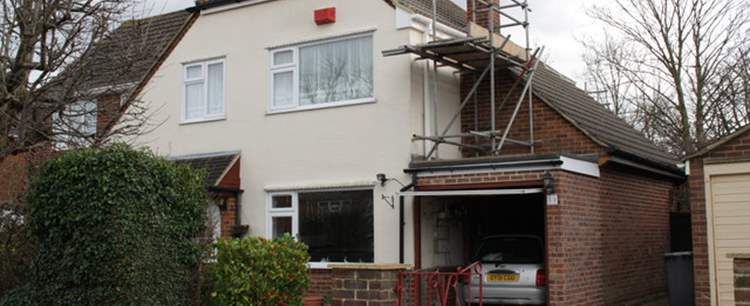Guide to buildings extensions
Introduction
Why build an extension?
Will I need planning permission?
How much will an extension cost?
Don’t forget the insurance implications
Summary
Introduction
Here is a quick introduction to some of the basic principles of building extensions onto a property.
It aims to give you an overview of some of the things you will need to consider before deciding to launch on that eagerly-anticipated extension.
Do remember though that each individual case will be different and affected by the type of property involved, where it is and which legal jurisdiction applies. It is always sensible to take specific professional advice as it applies to your unique situation.
Why build an extension?
There are lots of reasons why you might be eager to pursue this course of action, including:
- increasing the space in your property;
- avoiding the need to move home in a situation where you love your house and perhaps the local neighbourhood;
- driving up your property’s value and its potential return on investment;
- to avoid stamp duty and many other financial issues that come as part and parcel of moving home;
- caution over current property price predictions;
- creating a new facility for your property, perhaps such as a workshop or craft centre – though do note the potential “change of use” implications in that which are outlined below.
The exact imperative for building an extension will obviously be unique to you and your family situation. However, it is often a surprisingly straightforward and cost-effective way of achieving some of the above benefits.
Will I need planning permission?
This is often one of the first questions asked by people thinking about an extension.
The good news answer is – not necessarily!
To begin with, it’s important to note that the legislation here in England, Wales, Scotland and Northern Ireland, is different.
In Scotland, Wales and Northern Ireland, rear extensions more than three metres or four metres long will continue to require a full planning application, which places the design and impact of the building under more scrutiny.
In England, the position is more flexible and you can add single-storey extensions of up to six metres in length to terraced and semi-detached houses without undertaking full planning permission. If the main property is fully detached, then you can build larger extensions up to eight metres in length without full planning permission.
It’s worth noting though that even in England, you must still consult with your neighbours before constructing your extension. They have the right to object.
The position may also be more complicated (and full planning permission required) in situations such as conservation areas, listed buildings, extensions that are two or more stories high or in circumstances where you are proposing something radical or controversial by way of your choice of materials or external appearance.
You should also seek advice from your local council in situations where your plans would necessitate the removal of mature trees. Some trees can be subject to preservation orders, even when the locality is not deemed overall to be a conservation area or one of special architectural interest.
These laws also primarily apply to residential properties.
The position may be significantly different and more complex if your proposed extension is being constructed for some form of occupational use – even if of the soft “hobbyist” variety. That may involve what is termed a “change of use permission” from your local authority, particularly if there were a commercial activity dimension associated with your extension.
If you are contemplating building something that you suspect might involve a change-of-use position, to avoid subsequent issues arising downstream, it would be prudent to hold a general discussion in principle at the very earliest stages with your local authority.
For many householders in England though, this new flexibility in the law should significantly simplify life when considering an extension.
How much will an extension cost?
The only way to be sure about the costs involved is to get an architect to draw up professional plans, then to ask various builders to submit estimates for the construction involved. You should also make allowances for things such as the costs associated with an architect’s services – even if you subsequently decide not to go through with the building.
Almost inevitably, your choice of materials and the overall size/style of your extension will be the big factors in deciding how much you are going to need to spend. There may be other issues to consider as well, such as whether you wish services such as central heating, water and perhaps technology cabling, extended into the new structure as well.
Any elements of the work you can do yourself will, of course, help to keep your costs down. On a particular point though, remember to consult your property insurance providers, as they may have special requirements relating to build quality, builders’ guarantees, certifications and finally inspection sign-offs, prior to taking the revised property under cover. Some of those things might become complicated where you have undertaken significant amounts of the work yourself.
Although it’s impossible to say in isolation what your costs will be, you may be able to obtain some very approximate figures from various online cost estimation facilities.
Don’t forget the insurance implications
One insurance implication has already been touched on above but there are others that are important to consider.
For example, remember that:
- once you extend your property, the amount of buildings insurance cover required will change. The exact implications of that for things such as your premium and level of cover should be discussed at the earliest opportunity with your insurance provider;
- in situations where access integrity and therefore the security of your property is compromised while the work is underway, it is important to obtain appropriate insurance protection. The exact terminology for this type of cover may vary but it is likely to be called something such as renovation insurance or buildings extension insurance;
- another position that would require some support and advice on, would be where you plan to vacate your property entirely while the building work was underway. When a property is left unoccupied for a period of time exceeding a figure of somewhere between 30 and 45 consecutive days, you may need unoccupied property insurance – this may even be the case were you have tradespeople working in the property most days;
- you may also need different cover in situations where your extension is going to be used for some form of craft or trade activity. It is worth noting that once you change the use of your property from exclusively residential to perhaps a mixture of residential and commercial, your insurance requirements also change. It is important that you have the appropriate policy in place to cover the new circumstances and to provide ongoing protection.
Although, strictly speaking, it is not an issue for your own insurance cover, it is highly recommended that you investigate the insurance cover of your eventually selected builders with particular emphasis on their third-party liability provisions. You may need to call upon that in a situation where your builder caused an accident that led to a subsequent insurance claim by you against them.
Why is buildings extension insurance cover necessary?
An insurance policy represents a contract between the provider and the insured.
In the case of property cover, the owner declares the nature of the property and the purpose is it is being used for. That is then used by the insurance provider to calculate the risks involved in providing an appropriate policy.
If anything about the property changes significantly, including things relating to how it is being used, its size or value or at any given time, the security in place to keep intruders out, these factors need to be drawn to the attention of the provider of cover.
To take a concrete example, the risks associated with a property that is left unoccupied for a period of time are significantly different to those when people are in residence. That is why, whether within the context of building work or any other circumstances if the property is to be left unoccupied for more than the specified number of days, your insurance provider must be notified.
They can then ensure that the right type of policy providing the right degree of protection is in place.
Summary
It is now some years since the government introduced what was, at the time, temporary legislation in England permitting a more flexible approach to building extensions.
This was seen in part as an attempt to reduce red-tape but also as a measure designed to assist with the housing shortage known to exist in parts of the country.
It is widely perceived to have been a success and something popular with the public, with over 100,000 people having used the new simplified processes since their temporary (initial) introduction in 2013.
In spite of the reduction in the need for formal planning permission processes, it might still be common sense to discuss your plans with your neighbours in advance, rather than waiting for them to hear from the local council that the work is proposed. As they still have the right to object and potentially delay your building work, getting them on-side beforehand remains as important today as it ever was.



